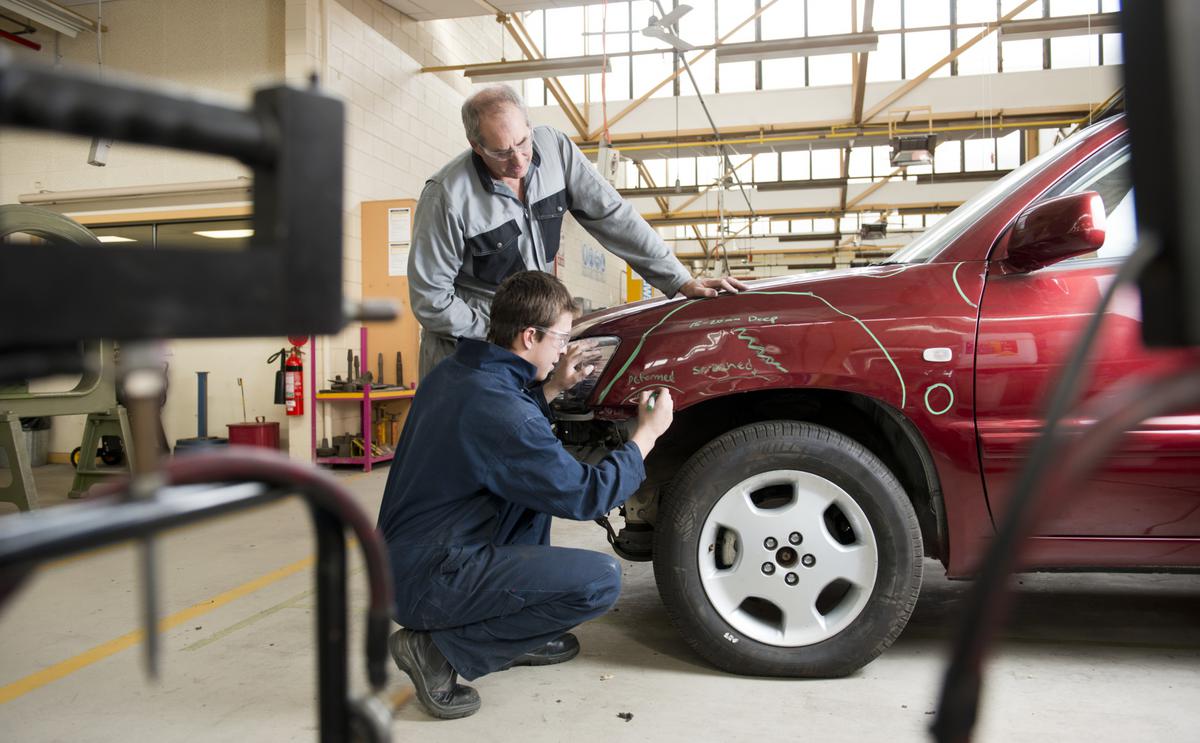
In addition to the scheduled vehicle maintenance checks, drivers should take care to perform regular visual inspections on their vehicle.
Level of fluids
- The cooling system. If you observe any significant rapid drop in the fluid level, this means a leak or a serious problem in the engine (cylinder fractures, etc.). Never drive without any fluid in the cooling system. You will cause overheating of the engine and, eventually, permanent damage.
- Windshield wiper fluids. To clean the windshield more effectively, add a special cleaning product to the water. These types of product also diminish the risk of the water freezing during winter. In the summer, a small amount of diluant helps to remove dead insects from the windshield.
- The batteries. The most recent types of batteries are hermetically sealed and need no maintenance. For other types, you must check the level of each cell. If necessary, add distilled water (to cover the battery plates). If one or more cells regularly dry out, this means that the battery is in bad condition. If the battery poles have oxidized, proper contact will not be made. Disconnect the cables from the battery according to the manufacturer’s directions, rub the battery and cable pins, apply a lubricant to them and, then, reconnect the poles.
- The brake fluid level. The brake fluid is contained in a closed circuit and practically speaking, the level should never fall. If you observe any significant decrease in the tank, consult a mechanic promptly, because the proper functioning of the brakes is the major factor ensuring your safety.
- The engine oil level. A marginal reduction in the level is normal (as long as the oil gauge reading is at the proper level, i.e. between the maximum and the minimum indicated). If you notice a greater reduction, top up the oil. If the level falls often, consult a mechanic.
Checking the tires
Car tires play an important role in keeping your vehicle on course, since it is the only point of contact between the road and your vehicle. Accordingly, their good condition and proper pressure are important.
- Modern tires have wear bars (or wear indicators) which are raised features located at the bottom of the tread grooves which indicate that the tire is nearing its wear limit. These wear indicators are identified by the initials TWI or an arrow on the sidewall. You should know that the legal limit of 1.6 mm is actually the minimum acceptable limit for safety reasons.
- You should not drive a vehicle with tires which have distorted or torn sidewalls, because this is highly dangerous. The risk of bursting or deflation is great. Sidewalls may be damaged during a collision with the sidewalk.
- The wrong balancing of a wheel will cause vibrations to the steering wheel when the vehicle is traveling at a certain speed or above. This phenomenon, apart from being unpleasant, may damage the steering system.
- For every type of vehicle and every type of tire, the manufacturer of the tire and the vehicle designer set two basic pressure levels for the air within the tire: one for regular use and one for travel at maximum load.
- Any decrease in the pressure inside one or more tires will throw the vehicle off balance. However, you may not notice this problem in daily use. For this reason, you should check your tires frequently:
- A visual inspection of all four wheels before getting into the car will allow you to notice serious anomalies.
- Checking the pressure on a monthly basis using a control pressure gauge enables you to confirm the proper pressure level.
- Do not forget to check the spare wheel and inflate it to the maximum possible pressure. This way, you will be able to relieve the pressure, if necessary, if you have to replace a wheel.
Lights and fuses
- Any light bulb is subject to wear over time and may burn out at any time. It is relatively easy to identify, while driving, any malfunction in the indicator lights or low or high beam headlights, but it is more difficult to identify malfunctions in the lights. Accordingly, you must check them while your car is stationary. If you are alone, all you have to do is to successively turn on the various lights of your vehicle and make a complete tour around it. As far as brake lights are concerned, position your vehicle with the rear end facing a reflective surface (e.g. a wall) and apply the brakes.
- Light bulbs and electrical components (windshield wipers, ventilation, de-misting mechanism, etc.) are protected from possible short-circuit by fuses, grouped in a box under the control panel (dashboard) or in the engine compartment (under the hood). In case of failure of a group of lights or any component, first try to determine the cause by checking the respective fuse. The position, the list and the voltage of each fuse will be recorded in the vehicle owner’s manual. Always carry some spare fuses with you.

